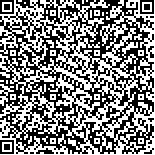| 摘要: |
| [摘要] 目的 比较知觉运动想象与视觉运动想象对脑梗死偏瘫患者下肢运动功能恢复的影响。方法 选取42例符合选择标准的脑梗死偏瘫患者,随机分为知觉运动想象(KMI)治疗组和视觉运动想象(VMI)治疗组各21例。两组均接受常规康复训练,并分别进行KMI训练及VMI训练。比较两组治疗前后、组间的Fugl-Meyer运动量表下肢项(FMA-LE)评分及功能性步行量表(FAC)评级。结果 治疗至第6周后,两组患者FMA-LE评分、FAC评级均呈增高趋势,各时间点差异有统计学意义(P均<0.05)。治疗3周后,KMI治疗组FMA-LE评分及FAC评级均高于VMI治疗组(P均<0.05)。治疗6周后,两组FMA-LE评分及FAC评级差异无统计学意义(P>0.05)。结论 KMI与VMI均能有效改善脑梗死偏瘫患者的下肢运动功能。在患者早期下肢运动功能较差时,KMI比VMI更有优势。 |
| 关键词: 知觉运动想象 视觉运动想象 脑梗死 偏瘫 下肢运动功能 |
| DOI:10.3969/j.issn.1674-3806.2017.06.11 |
| 分类号:R 49 |
| 基金项目: |
|
| A comparative study on lower limb motor function in the patients with cerebral infarction hemiplegia between kinesthetic motor imagery and visual motor imagery |
|
ZHONG Lin
|
|
Department of Rehabilitation Medicine, the People′s Hospital of Boluo County,Guangdong 516100,China
|
| Abstract: |
| [Abstract] Objective To compare the effects of kinesthetic motor imagery(KMI) and visual motor imagery(VMI) on lower limb motor function in the patients with cerebral infarction hemiplegia.Methods Forty-two patients with cerebral infarction hemiplegia were randomly divided into KMI group(trained with KMI, n=21) and VMI group(trained with VMI, n=21). The conventional rehabilitation was conducted in both groups. Besides this, the KMI group was given KMI training and the VMI group was given VMI training. The scores of Fugl-Meyer motor assessment in lower extremity(FMA-LE) and the functional ambulation category scale(FAC) and the lower limb motor function were compared between the two groups at the time of admission and 3, 6 weeks after the treatment.Results There was an increasing trend of FMA-LE and FAC scores in the lower limbs between the two groups 6 weeks after the treatment, and there was significant difference at each time points(P<0.05). FMA-LE and FAC scores of the KMI group were significantly higher than those of the VMI group 3 weeks after the treatment(P<0.05). There was no significant difference between the two groups 6 weeks after the treatment(P>0.05).Conclusion KMI and VMI can improve the lower limb motor function in the patients with cerebral infarction hemiplegia. KMI has more advantages than VMI for the patients in the early stage of the disease. |
| Key words: Kinesthetic motor imagery(KMI) Visual motor imagery(VMI) Cerebral infarction Hemiplegia Lower limb motor function |

